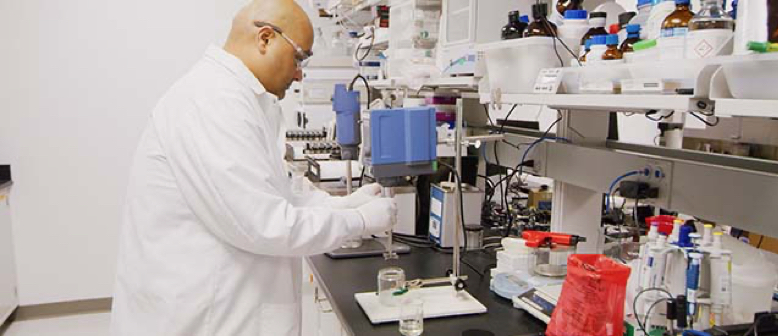Developing the Next Generation of Dermatology Treatments
Incyte’s science-first approach and heritage in immunology has formed the foundation of our company. Today, we are building on this legacy as we discover and develop innovative dermatology treatments to bring solutions to patients in need.
Our research and development efforts in dermatology are initially focused on leveraging our knowledge of the JAK-STAT pathway. We are exploring the potential of JAK inhibition for a number of immune-mediated dermatologic conditions with a high unmet medical need, including atopic dermatitis, vitiligo and hidradenitis suppurativa.
Research has shown that the JAK-STAT pathway mediates the cellular effects of cytokines involved in the pathogenesis of many immune-mediated dermatologic conditions. We strive to identify and develop therapies to modulate immune pathways driving uncontrolled inflammation to help restore normal immune function and bring the body closer to homeostasis.
Resources
FOR HEALTHCARE PROFESSIONALS

Incyte is committed to providing timely and accurate product information to healthcare professionals upon request. If you need medical information or have a medical question,
please visit incyteglobalmedicalinformation.com.
To report a possible Adverse Event or Product Complaint related to an Incyte product,
Disease Areas of Interest
VITILIGO
Vitiligo is a condition that causes the skin to lose its pigment cells (melanocytes), often resulting in discolored patches of the skin.
Vitiligo is a chronic autoimmune disease characterized by depigmentation of skin that results from the loss of pigment-producing cells known as melanocytes. Overactivity of the JAK signaling pathway is believed to drive inflammation involved in the pathogenesis and progression of vitiligo. It affects approximately 0.5% to 2.0% of the population globally1. In the United States, more than 1.5 million people are diagnosed with vitiligo2. The overall prevalence of the condition is estimated to be approximately 2–3 million3, with the majority of patients (approximately 85%) suffering from nonsegmental vitiligo4. Vitiligo can occur at any age, although many patients with vitiligo will experience initial onset before the age of 305. Vitiligo is associated with quality-of-life impairments6,7 and patients are at an increased risk for comorbidities and mental health disorders, including depression8,9.
References:
- Kruger C, Schallreuter KU. A review of the worldwide prevalence of vitiligo in children/adolescents and adults. Int J Dermatol. 2012;51(10):1206-1212.
- Bergqvist C, Ezzedine K. Vitiligo: A Review. Dermatology. 2020;236:571-592.
- Gandhi K, Ezzedine K, Anastassopoulos KP, et al. Prevalence of vitiligo among adults in the United States. JAMA Dermatol. 2022;158(1):43-50.
- Ezzedine K, Eleftheriadou V, Whitton M, van Geel N. Seminar: Vitiligo. Lancet. 2015;386:74-84.
- Frisoli M, Essien K, Harris JE. Vitiligo: mechanisms of pathogenesis and treatment. Annu Rev Immunol. 2020;38(1):621-648.
- Morrison B, Burden-Teh E, Batchelor JM, Mead E, Grindlay D, Ratib S. Quality of life in people with vitiligo: a systematic review and meta-analysis. Br J Dermatol. 2017;177(6):e338-e339.
- Silverberg JI, Silverberg NB. Association between vitiligo extent and distribution and quality-of-life impairment. JAMA Dermatol. 2013;149(2):159-164.
- Wang G, Qiu D, Yang H, Liu W. The prevalence and odds of depression in patients with vitiligo: a meta-analysis. J Eur Acad Dermatol Venereol. 2018;32(8):1343-1351.
- Alavi A, Hamzavi I, Brown K, et al. Janus kinase 1 inhibitor INCB054707 for patients with moderate-to-severe hidradenitis suppurativa: results from two phase II studies. Br J Dermatol. 2022;186(5):803-813. doi:10.1111/bjd.20969


